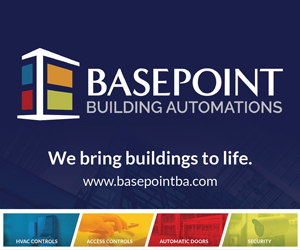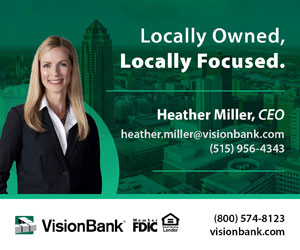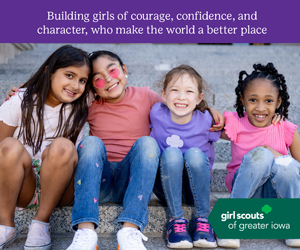A Closer Look: Sally Dix

.floatimg-left-hort { float:left; } .floatimg-left-caption-hort { float:left; margin-bottom:10px; width:300px; margin-right:10px; clear:left;} .floatimg-left-vert { float:left; margin-top:10px; margin-right:15px; width:200px;} .floatimg-left-caption-vert { float:left; margin-right:10px; margin-bottom:10px; font-size: 12px; width:200px;} .floatimg-right-hort { float:right; margin-top:10px; margin-left:10px; margin-bottom:10px; width: 300px;} .floatimg-right-caption-hort { float:left; margin-right:10px; margin-bottom:10px; width: 300px; font-size: 12px; } .floatimg-right-vert { float:right; margin-top:10px; margin-left:10px; margin-bottom:10px; width: 200px;} .floatimg-right-caption-vert { float:left; margin-right:10px; margin-bottom:10px; width: 200px; font-size: 12px; } .floatimgright-sidebar { float:right; margin-top:10px; margin-left:10px; margin-bottom:10px; width: 200px; border-top-style: double; border-top-color: black; border-bottom-style: double; border-bottom-color: black;} .floatimgright-sidebar p { line-height: 115%; text-indent: 10px; } .floatimgright-sidebar h4 { font-variant:small-caps; } .pullquote { float:right; margin-top:10px; margin-left:10px; margin-bottom:10px; width: 150px; background: url(http://www.dmbusinessdaily.com/DAILY/editorial/extras/closequote.gif) no-repeat bottom right !important ; line-height: 150%; font-size: 125%; border-top: 1px solid; border-bottom: 1px solid;} .floatvidleft { float:left; margin-bottom:10px; width:325px; margin-right:10px; clear:left;} .floatvidright { float:right; margin-bottom:10px; width:325px; margin-right:10px; clear:left;}
Describe your transition back into the work force.
Timing is everything. I was really lucky that I was ready to go back. I had a good amount of time at home with my boys and had gotten a little perspective on what I wanted to do. So instead of having to go back, I was able to make an active choice. This was the right opportunity for me, and that makes it easy. I have great support at home, and that makes it easy. It’s a lot of work, and I miss some of the freedom of being with the boys all day … but this was exactly the right culmination of circumstances.
So you’re a working mother?
I am a working mother. I never thought that I would say that about myself. That’s the first time I sort of put that together. And after three weeks, I can tell you that we’re going to refine and we’re going to massage and we’re going to get better at it. But there’s no way to do it all. … I think balance is overrated. You do the best you can, you plan for what you can and be ready for what’s not expected.
How did you land the job?
I had been doing a lot of networking; I was lucky that I had a lot of great connections in the community. People have been so good to us for the 10 years that we’ve been here, so I was able to keep up with some of my contacts. And when the position became available, probably six different people e-mailed me and said, “You should totally apply for this.” And it was the perfect fit; it was exactly obvious that this is what I wanted to do. It’s a cause that I’m passionate about; we’ve been touched by it personally in our lives and so many others that we know.
What is your personal experience with breast cancer?
My mom is actually a two-time breast cancer survivor. So it’s been personal to me and my family. So much about these causes can sound cliché, but if no other daughter ever has to go through that with her mother, that’s a huge win. It’s stressful for everyone involved. … I want to find a cure before it’s my problem.
What’s your primary role?
This is totally a volunteer organization. I think my first responsibility is to find out how we can leverage the great impact that this organization has already had to do even greater things. The Race for the Cure in Des Moines generates about $1.2 million. Of that, this organization gives away about $700,000 in grants to Iowa to help with breast health education, awareness and accessibility. If they have been able to do that just with volunteers, imagine what we can do if we align our public policy initiatives with our grant initiatives with a strong communication and marketing plan. … There is so much potential. And I think my job is to capitalize on that potential.
The race is a big focus. What else is happening?
The race is obviously where the organization has put a lot of its time and energy. For good reason; it’s generated the funds and the awareness that we need. Last year, there were 90 third-party events that were hosted to benefit Susan G. Komen – Des Moines Affiliate. That’s up from three the year before. So there is a huge potential market there for these third-party events.
What other kinds of work have you done outside of the nonprofit world?
When I graduated from college, I spent six months in Florida on a boat studying manatees. And then I was back in Chicago and I had an internship at Shedd Aquarium. I was very lucky at a young enough age to have the hands-on experience. I was literally living the dream. It was a very selective process; I was honored to be chosen. But I didn’t like it. It was a very good thing for me to have that opportunity young instead of working my whole career to get there and realizing that it wasn’t what I wanted to do.
So you’ve found your calling?
I believe very much in these mission-related organizations. I’m motivated by a mission; that’s what gets me out of bed in the morning. People joke about what they do on any given day and they say, “It’s not like I’m curing cancer or anything.” I am. Every day I go to work, I’m curing cancer. And that means something to me.








